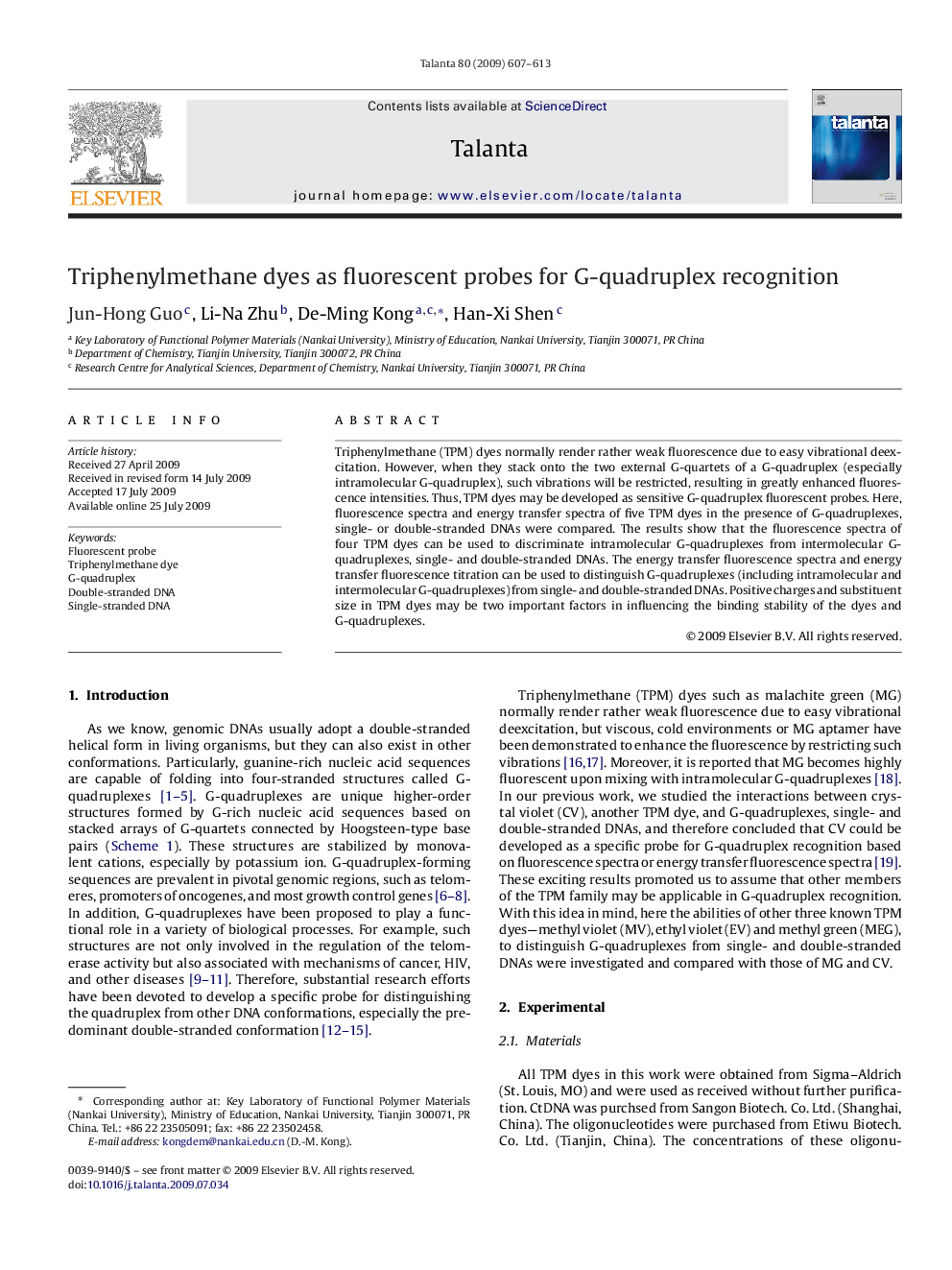| Article ID | Journal | Published Year | Pages | File Type |
|---|---|---|---|---|
| 1246736 | Talanta | 2009 | 7 Pages |
Triphenylmethane (TPM) dyes normally render rather weak fluorescence due to easy vibrational deexcitation. However, when they stack onto the two external G-quartets of a G-quadruplex (especially intramolecular G-quadruplex), such vibrations will be restricted, resulting in greatly enhanced fluorescence intensities. Thus, TPM dyes may be developed as sensitive G-quadruplex fluorescent probes. Here, fluorescence spectra and energy transfer spectra of five TPM dyes in the presence of G-quadruplexes, single- or double-stranded DNAs were compared. The results show that the fluorescence spectra of four TPM dyes can be used to discriminate intramolecular G-quadruplexes from intermolecular G-quadruplexes, single- and double-stranded DNAs. The energy transfer fluorescence spectra and energy transfer fluorescence titration can be used to distinguish G-quadruplexes (including intramolecular and intermolecular G-quadruplexes) from single- and double-stranded DNAs. Positive charges and substituent size in TPM dyes may be two important factors in influencing the binding stability of the dyes and G-quadruplexes.
